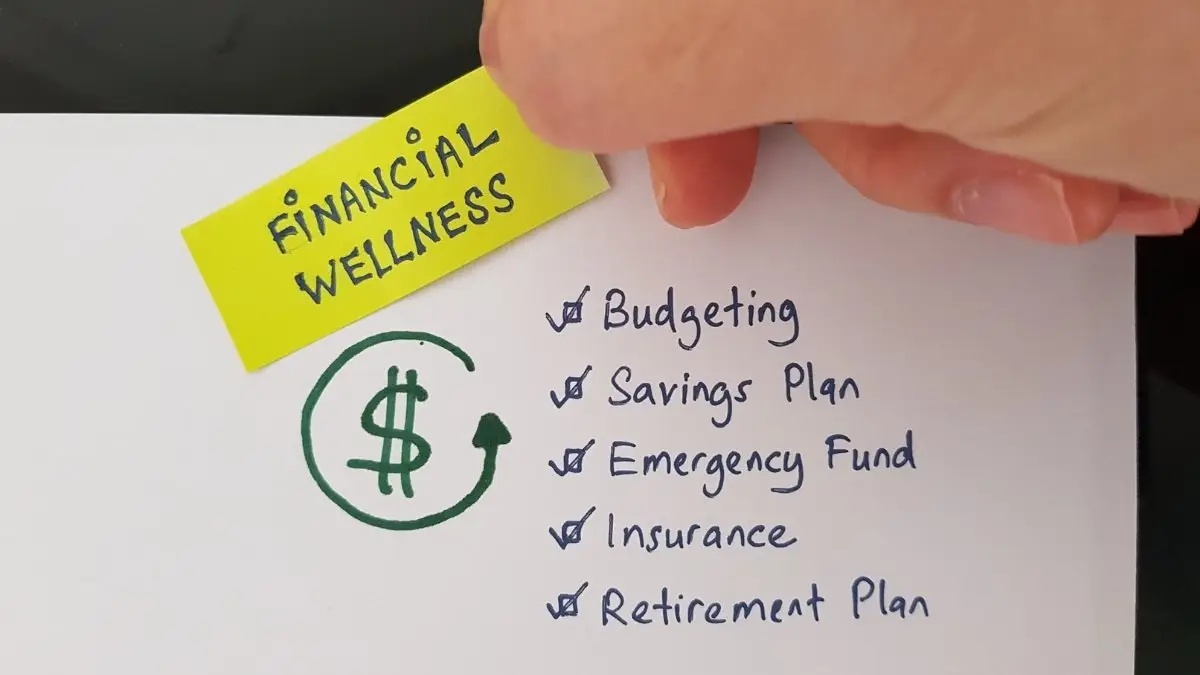That financial advice about keeping 3-6 months of expenses saved? It’s killing your wealth-building potential while failing to protect you when it matters most. Most people blindly follow this outdated rule without questioning where it came from or if it actually works in 2025. Spoiler alert: it doesn’t.
I spent 15 years advising clients on financial planning, and the dirty truth about emergency funds shocked me: the conventional strategy leaves you dangerously exposed during actual crises.
Meanwhile, your hard-earned cash sits earning nothing – all while inflation silently steals 3% annually. That $20,000 emergency fund? It’s losing $600 in purchasing power every year.
Both “all-cash” and “fully invested” emergency fund strategies are fundamentally flawed. The real solution isn’t what financial gurus preach on TikTok or what your parents taught you.
Your financial safety net deserves better than outdated, one-size-fits-all advice.
The “3-6 Months” Rule Is Based on Outdated Crisis Data
The Reality Behind the 3-6 Month Rule
How much emergency savings do you really need?
The Origin: 2008-2009 Great Recession
8-10 months typical unemployment duration
Financial advice was built on an exceptional crisis
Today’s Reality: 2025
20.6 weeks median unemployment duration
About 5 months – significantly shorter
What Research Actually Shows
Sabat-Gallagher minimum to prevent financial disaster (2025 adjusted)
Vanguard: Financial well-being boost from savings
Current Savings Reality
Americans with 3 months saved
Couldn’t cover 3 months by any means
“Everywhere I looked, it seemed like the same guideline was repeated. But that guideline has been repeated for years without much evidence to back it up.”
The key takeaway: Emergency funds are crucial, but the amount you need is more nuanced than conventional wisdom suggests.
The standard “keep 3-6 months of expenses saved” advice isn’t just conventional wisdom – it’s a financial planning fossil.
This universally accepted rule traces back to the Great Recession of 2008-2009, when unemployment typically lasted 8-10 months. Financial advisors looked at this devastating economic period and built their recommendations around it.
But here’s what nobody tells you: they based a universal guideline on an exceptional crisis.
The Great Recession was the worst economic downturn since the Great Depression. Using it as the benchmark for everyday emergency planning is like sizing your umbrella for a hurricane when most days bring light showers.
Current data tells a different story – the median unemployment duration in 2025 is just 20.6 weeks (about 5 months), significantly shorter than during the financial crisis.
Recent research challenges this one-size-fits-all approach. A 2019 study by Sabat and Gallagher found that a minimum of $2,467 is enough to prevent financial disaster for the average household.
Adjusted for inflation, that’s about $2,970 in 2025 dollars – far less than the 3-6 month rule would suggest for most people.
Vanguard’s 2024 research supports this more nuanced view. They found that having just $2,000 in emergency savings provides a 21% boost to financial well-being.
The full 3-6 month cushion increases that to 34% – better, but with diminishing returns beyond the initial $2,000.
Meanwhile, Federal Reserve data from 2024 shows only 55% of Americans have three months saved, and 30% couldn’t cover three months of expenses by any means. The conventional advice isn’t wrong, but it’s a blunt instrument for situations requiring precision.
As financial therapist Amanda Clayman puts it: “Everywhere I looked, it seemed like the same guideline was repeated. But that guideline has been repeated for years without much evidence to back it up.”
This doesn’t mean emergency funds aren’t important – they’re critical. But understanding the actual data helps you make smarter decisions about how much to save and where to keep it.
The Dangerous Allure of Investing Your Emergency Fund

The math is undeniably tempting. A $20,000 emergency fund earning 4% in a high-yield savings account versus 10% in the stock market creates a $30,000+ difference over 20 years. That opportunity cost makes investing your safety net seductive on paper.
Financial blogger “Big ERN” even calculated a 69% probability that stocks will outperform cash over any 36-month period. Those odds sound promising – until you consider what happens in the other 31% of scenarios.
That 31% underperformance risk becomes catastrophic when you actually need the money.
All major financial institutions – Vanguard, Fidelity, Morgan Stanley, and Charles Schwab – unanimously oppose investing emergency funds in stocks. This rare consensus among competing firms should raise eyebrows.
Job loss and market crashes happen simultaneously about 70% of the time. This isn’t coincidence – it’s causation. When companies face economic pressure, they both lay off workers and watch their stock prices tumble.
Consider these sobering market realities:
- The 2008 crash saw the S&P 500 plummet 54%, taking over 4 years to recover
- The 2000 tech bubble burst resulted in a 49% S&P 500 decline (6-year recovery) and a devastating 77% NASDAQ crash (15-year recovery)
- Even the relatively mild 2022 bear market dropped 25% and needed 18 months to bounce back
- Historically, 70% of recessions since 1950 have been accompanied by average stock declines of 31%
Let’s make this concrete with a real scenario. Imagine having a $30,000 emergency fund fully invested in March 2008:
- September 2008: You lose your job (joining 30 million others) while markets are already down 30%
- Your $30,000 emergency fund is now worth $21,000
- By March 2009, it would be worth just $13,800 (down 54%)
- If you need $5,000 monthly to live, your emergency fund now lasts 2.7 months instead of the 6 months you planned
Even looking at “Big ERN’s” own simulation data fairly shows the risk. Yes, the mean outperformance was $354 per $3,600 invested over 36 months – but the 5th percentile outcome showed a shortfall between $795 and $1,555. That might not sound catastrophic until you’re living through it with no income.
Wealth Advisor Brian O’Leary captures it perfectly: “Imagine the market tanking, you losing your job because of the subsequent bad economy and then realizing that your emergency fund is worth half of what it was before the market crash.”
There’s also the practical issue of settlement time. Even if you sell stocks immediately when trouble hits, it takes 2-3 business days to access your money – days that might matter in a genuine emergency.
The math looks impressive in a spreadsheet, but reality doesn’t unfold in neat simulations. True financial security means having funds available exactly when needed, at exactly the value expected.
The relatively small gain from investing emergency funds isn’t worth the devastating downside of having half your safety net vanish precisely when you need it most.
Why Your Job Loss and Market Crash Will Happen Together

If there’s one relationship that seals the fate of stock-based emergency funds, it’s this: you’ll likely lose your job exactly when your stock portfolio is crashing.
Historical data since 1950 shows a stark reality – 70% of recessions coincided with significant market declines. This isn’t random bad luck but economic cause and effect.
The stock market is forward-looking, typically peaking about 5 months before a recession officially begins.
When investors sense trouble brewing, they sell before the economic contraction fully materializes. By the time companies start massive layoffs, stocks have already fallen significantly.
The mechanism is straightforward: when the economy contracts, companies both lay off workers AND see their stock prices fall. It’s the same pressure point causing both problems.
Looking at the numbers:
- Among the 10 official recessions since 1950
- 7 of them (70%) came with substantial stock declines
- The average loss in those 7 downturns was 31%
- Losses ranged from 18% to a devastating 55%
- Your probability of job loss increases by 17% during recessions compared to normal periods
The 2008 financial crisis saw 30 million lost jobs alongside a 54% market decline. Even the brief 2020 pandemic crash caused 15% unemployment with a 34% market drop (though recovery was unusually quick).
This correlation matters right now in 2025. Current economic indicators show:
- Recession probability between 30-40% (J.P. Morgan: 40%, NY Fed: 28.9%)
- Unemployment at 4.3% (ticking up from 3.8%)
- Concerning factors including new tariffs, inflation at 2.9%, and Fed policy uncertainty
- Warning signs like near-zero job growth and a softening labor market
Consider this comparison of recent downturns:
| Recession | Stock Decline | Unemployment Peak | Duration |
|---|---|---|---|
| 2008-09 | -54% | 10.0% | 17 months |
| 2020 | -34% | 15% | 1 month |
| 2022 | -25% | 4.3% | 9 months |
The few historical exceptions to this pattern occurred nearly 50 years ago, in economic conditions vastly different from today’s interconnected global economy.
The bottom line is visceral – when you’re handed a pink slip is precisely when your stock-based emergency fund will be worth significantly less than you counted on.
We’re potentially heading into exactly this scenario right now in 2025, making this more than a theoretical exercise.
The Inflation Vs. Safety Trade-off (2025 Numbers)

Stock market advocates do have one legitimate point: inflation erodes the purchasing power of cash over time. But here’s what they won’t tell you – in 2025, high-yield savings accounts are actually winning the inflation battle.
For the first time in years, you can earn a real (after-inflation) return while keeping your emergency fund completely safe. This favorable environment fundamentally changes the calculation.
Let’s look at current rates:
- Top high-yield savings accounts offer between 4.0-5.0% APY
- Axos Bank: 4.66% APY
- LendingClub: 4.20% APY
- BrioDirect: 4.35% APY
- Current inflation stands at 2.9% (August 2025)
- This creates a real return of 1.1-1.6% – you’re actually gaining purchasing power
Contrast this with traditional savings accounts paying a paltry 0.01%, resulting in a -2.89% real return after inflation. That’s the scenario most stock advocates use to make their case, but it’s not today’s reality.
Yes, the S&P 500’s long-term average is around 10%, but that comes with those -18% to -54% down years we discussed earlier. Even 2024’s exceptional 25% return isn’t sustainable.
To make this tangible, let’s calculate what happens to a $20,000 emergency fund over one year:
- Traditional savings (0.01%): Gains $2, loses $580 to inflation = -$578 real loss
- High-yield savings (4.5%): Gains $900, loses $580 to inflation = +$320 real gain
- Stocks (10% average): Gains $2,000, but could lose $3,600 to $10,800 in a downturn
The Federal Reserve’s current rate of 4.00-4.25% (after one cut in September 2025) means high-yield savings will remain competitive through 2025-2026. Further cuts are expected but rates are likely to stay elevated due to persistent inflation concerns.
This favorable environment means you don’t have to choose between safety and losing purchasing power. For the first time in years, you can have both – complete liquidity and safety while staying ahead of inflation.
The real cost of security is historically low right now, making the decision to keep your emergency fund in cash equivalents easier than it’s been in a decade.
What Actually Constitutes an Emergency (The Data Is Surprising)

Most people build emergency funds without understanding what they’re actually protecting against. We imagine catastrophic job loss lasting months, but the data tells a different story about what emergencies really look like.
These aren’t hypothetical scenarios – 60% of Americans faced an unexpected expense in the past year according to the Consumer Financial Protection Bureau, and 37% needed to tap their emergency savings.
The types of emergencies people actually face reveal the optimal strategy for protecting against them:
- Medical issues: 29% (most common)
- Job loss: 20% (second most common)
- Car repairs: 14%
- Home repairs: 12%
- Bank overdraft/late fees: 13%
Even more revealing is how much people actually needed from their emergency funds:
- Less than $500: 18%
- $500-$999: 22%
- $1,000-$2,499: 26% (most common)
- $2,500-$4,999: 15%
- $5,000+: 19%
Over half of emergency fund withdrawals were under $2,500, and the most common range was $1,000-$2,499. This contradicts the assumption that we need instant access to six months of expenses.
People used their emergency funds for:
- Unplanned emergencies like medical costs or car repairs: 51%
- Monthly bills: 38%
- Day-to-day expenses: 32%
- Helping family or friends: 22%
- Paying down debt: 21%
- Non-essentials: Only 19%
Typical costs for common emergencies include:
- Median major medical expense: $1,000-$1,999
- Average home emergency: $2,321
- Car accident out-of-pocket: $5,000-$60,000 (depending on severity)
The key insight? Most emergencies fall in the $1,000-$2,500 range and have NO correlation with stock market performance.
Medical issues, car problems, and home repairs happen regardless of economic conditions. Only job loss (20% of emergencies) correlates with market downturns.
This data strongly supports a tiered approach to emergency funds – keeping enough cash for the most common emergencies while optimizing the rest of your safety net for less likely but more severe scenarios.
The Tiered Strategy That Actually Makes Sense

The endless debate between “all cash” and “all invested” emergency funds misses the obvious compromise: a tiered approach that matches your money’s accessibility to the likelihood of different emergencies.
This strategy is supported by financial planners and communities like Bogleheads, who recognize that emergencies have different time horizons and liquidity needs.
Here’s how to implement a three-tier structure that works for most people:
Tier 1: Immediate Access (1 month of expenses) This is your front-line defense for true emergencies requiring same-day access.
- Where: Checking account or instant-access savings
- Amount: $3,000-$5,000 typical
- Purpose: Cover immediate emergencies and current month expenses
- Yield: Don’t worry about optimization here
- Why: Medical emergencies, car breakdowns, and urgent home repairs need same-day access
Tier 2: Quick Access (2-4 months of expenses) This handles most extended emergencies and provides a bridge during short periods of unemployment.
- Where: High-yield savings account
- Amount: $6,000-$20,000 typical
- Current rates: 4.0-4.5% APY
- Access time: 1-2 business days
- Purpose: Major emergencies, bridging short unemployment
- Specific accounts:
- Axos Bank ONE Savings: 4.66% APY (with direct deposit requirements)
- LendingClub: 4.20% APY (no minimums)
- Marcus by Goldman Sachs: 3.65% APY
Tier 3: Extended Reserve (3-6 additional months) This protects against prolonged hardships while earning competitive returns with minimal risk.
- Where: Treasury bills, short-term bond ETFs, or conservative allocations
- Amount: $9,000-$30,000 typical
- Options:
- 4-week T-Bills: ~4.3% (ladder 12 purchases for monthly maturity)
- Money market funds (VMFXX): ~4.2%
- Ultra-short bond ETFs (VGSH, BIL): ~4%
- I-Bonds (after 12 months, with 3-month interest penalty)
- Access time: 3-7 business days
- Purpose: Extended job loss, major medical events
- Risk level: Minimal – government-backed or very short duration
Concrete implementation example for a $45,000 total emergency fund (6 months at $7,500/month):
- Tier 1: $7,500 in checking (1 month)
- Tier 2: $15,000 in high-yield savings at 4.5% = $675/year (2 months)
- Tier 3: $22,500 in T-Bill ladder at 4.3% = $968/year (3 months)
- Total annual return: $1,643 vs. $18 in traditional savings
This approach is still fully liquid within 1-7 days for any scenario, but offers substantial benefits:
- Beats all-cash approach by ~$1,600 annually
- Maintains immediate liquidity for 90% of emergencies (Tier 1+2)
- Limits risk exposure to just Tier 3, with minimal volatility
- Provides government backing on Tier 3 (T-Bills)
- Creates more psychological comfort than an invested approach
The tiered strategy acknowledges a simple truth: not all emergencies are equal, so your emergency fund shouldn’t be treated as a single monolithic entity.
Who Can Actually Get Away With Riskier Strategies

While a tiered approach works for most people, a small minority can justify more aggressive emergency fund strategies. But here’s the critical point – you must meet ALL of these criteria, not just some.
Higher risk tolerance alone doesn’t mean ignoring the correlation data between job loss and market crashes. Even high-income earners should proceed with extreme caution.
Who might consider a hybrid approach (50% cash, 50% conservative investments)? You need to check EVERY box on this list:
- Net worth exceeds $500,000+
- Dual-income household with both incomes stable
- Neither income subject to recession-related layoffs
- Already have 6-12 months in cash/equivalents
- Excellent health insurance and disability coverage
- No dependents or mortgage, OR both are well-protected
- High credit limits available as emergency bridge
- Can psychologically handle portfolio volatility
- Understand you’re accepting correlation risk
Even financial expert Ramit Sethi, known for aggressive investing strategies, recommends a full 12 months liquid emergency fund. This stance intensified after COVID-19, when 22 million jobs disappeared in 2020.
Sethi suggests allocating 5-10% of take-home pay to savings until reaching this target.
Some financial influencers promote even more controversial approaches. Mr. Money Mustache’s “Springy Debt” strategy uses lines of credit instead of cash reserves.
His philosophy argues against letting cash sit idle while paying interest on debt. But this requires perfect credit, zero-balance lines of credit or HELOCs, and extreme discipline. It’s not recommended for most people, especially after 2008 when banks froze and cut credit lines during the crisis.
High earners should still avoid these risky approaches:
- 100% stocks for emergency fund (unanimously opposed by experts)
- Counting retirement accounts as emergency funds (penalties + taxes make this expensive)
- Using margin/leverage for emergency access (rates spike during crises)
- Cryptocurrency as emergency funds (too volatile)
For everyone else, stick with a cash-based strategy if:
- You’re questioning whether you qualify for a riskier approach (you don’t)
- You have a single income household
- You face job instability
- You’re self-employed/commission-based (actually need LARGER cash reserves of 9-12 months)
- Your family has health issues
The 2025 economic context makes conservative approaches even more important:
- 30-40% recession probability
- Softening labor market
- Inflation still above Fed target (2.9%)
- Tariff risks
- Market at elevated valuations after a +25% year
This is NOT the time to experiment with aggressive strategies, regardless of your financial situation.
Your 2025 Action Plan: Decision Framework

Let’s turn all this information into a concrete plan you can implement today. Follow this decision framework to build the right emergency fund for your situation.
Step 1: Calculate Your Target Amount Start with actual expenses, not income:
- Track 3 months of spending (use Mint, YNAB, or bank statements)
- Include: rent/mortgage, utilities, food, insurance, minimum debt payments, transportation
- Exclude: discretionary spending, entertainment, dining out (you’d cut these in emergency)
- Multiply essential spending by target months:
- Single income, stable job: 6 months
- Dual income, both stable: 3-6 months
- Self-employed, commission, seasonal: 9-12 months
- Single parent: 9-12 months
Example calculation:
- Monthly essentials: $4,500
- Dual income household: 6 months target
- Emergency fund goal: $27,000
Step 2: Assess Your Current Position Calculate: Current emergency savings: $______ Target amount: $______ Gap: $______
If the gap is large (>$20,000), use this milestone approach:
- Milestone 1: $1,000 (psychological win)
- Milestone 2: $2,000 (Vanguard research threshold)
- Milestone 3: $2,970 (Sabat-Gallagher minimum)
- Milestone 4: 3 months expenses
- Milestone 5: 6+ months expenses
Step 3: Choose Your Strategy Recommended for 90% of readers – Tiered Approach:
Month 1-6: Build Tier 2 foundation
- Open high-yield savings account
- Set up automatic transfer: $500-$1,000/month (or 10% of take-home)
- Target: $6,000-$12,000 (2-4 months)
Month 7-12: Complete Tier 2, start Tier 3
- Finish Tier 2 to 4 months expenses
- Open brokerage account (Fidelity, Vanguard, or Schwab)
- Begin T-Bill ladder: Purchase one 4-week T-Bill monthly
- Target: 6 months total coverage
Month 13+: Optimize and maintain
- Complete T-Bill ladder (12 purchases = always have one maturing)
- Review rates quarterly, switch HYSA if better rate available
- Auto-reinvest maturing T-Bills
- Replenish immediately after any use
Step 4: Set Up Automation Key automations to implement:
- Paycheck direct deposit split (if available): 10% to emergency savings
- Scheduled transfer: Day after payday, checking → HYSA
- T-Bill ladder: Fidelity “Auto Roll” feature
- Tracking: YNAB or Mint to monitor progress
Step 5: Review Triggers Review your emergency fund strategy when:
- Income increases/decreases by 20%+
- Household size changes (marriage, children)
- Job change or instability
- High-yield rates drop below 3%
- Recession declared
- You actually use emergency fund
Tools and Resources Checklist: High-Yield Savings Accounts:
- Axos Bank (4.66%)
- LendingClub (4.20%)
- Marcus by Goldman Sachs (3.65%)
Brokerage for T-Bills/Money Market:
- Fidelity (recommended for beginners – excellent customer service)
- Vanguard (rock-solid, research-oriented)
- Charles Schwab (great mobile app)
Tracking Tools:
- YNAB ($14.99/month – best for budgeting)
- Mint (free – basic tracking)
- Empower (free – net worth focus)
Timeline Expectations: At $500/month contribution:
- $1,000: 2 months
- $6,000: 12 months
- $12,000: 24 months
- $27,000 (full fund): 54 months (~4.5 years)
At $1,000/month contribution:
- $1,000: 1 month
- $6,000: 6 months
- $12,000: 12 months
- $27,000 (full fund): 27 months (~2.25 years)
Building your emergency fund takes time – most people need 2-5 years to reach their full target. Start where you are, focus on hitting those early milestones, and remember that even a partial emergency fund provides significant protection against life’s inevitable surprises.

